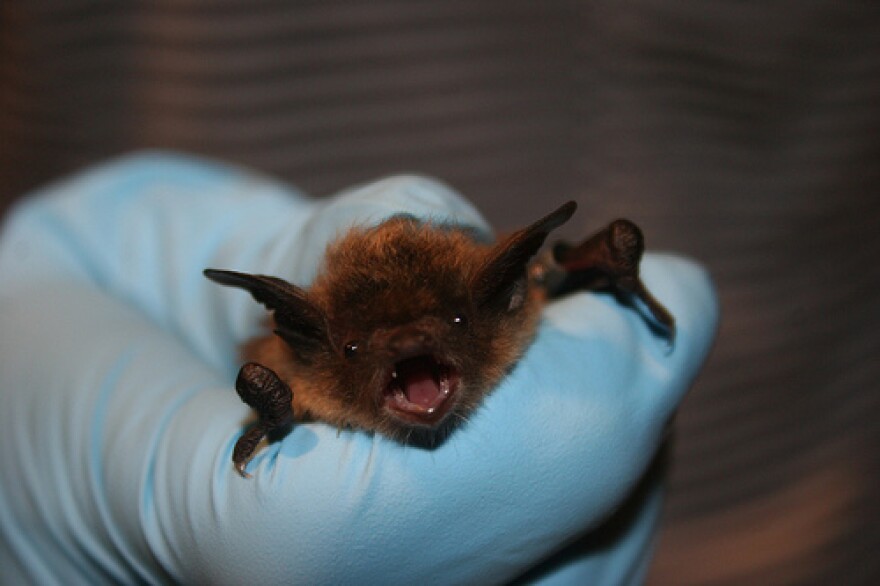White-Nose Syndrome, a disease in the Eastern United States, has not yet made its way to Colorado – something wildlife managers are happy about. It's still an issue of concern, though, and at the U.S. Geological Survey's Fort Collins Science Center, a researcher has helped make a breakthrough in scientists' understanding of the deadly fungus.
Paul Cryan, a research biologist with USGS in Fort Collins, was a co-author on a identifying just what it is that happens inside bat bodies when the fungus infects them.
"It's difficult to know what's going on inside the body of a bat. It's even more difficult to know what's happening inside a hibernating bat that's dropped its body temperature to refrigerator levels and can't be disturbed or it might run out of energy," said Cryan.
Understanding how the fungus, , is affecting the bats (it mostly hurts them while they are hibernating) could be key to figuring out how to help them. So Cryan and his fellow researchers used a kind of chemically tagged water, injected into the bats' bodies, to track what was going on. This allowed them to measure the bat's energy use early in the disease.
"And that showed us that the fungus is causing the bats to burn through their winter fat reserves quicker than normal and earlier than we really suspected."
The researchers also learned that the bats body chemistry was getting wacky.
"For example, early on we see signs of the blood becoming acidic, but then later, as their bodies try to compensate for these imbalances, other things start going wrong, electrolyte imbalances," said Cryan.
Learning these "links in the [disease] chain," Cryan said, can help scientists and wildlife managers find ways they might intervene in the fungus' progression, and help the bats. For example, maybe they could try to provide bats with electrolytes when they are in the later stages of the disease and trying to survive.
Of course, in many cases, that may not be practical. You can't exactly leave Gatorade sitting around on the floors of caves across the U.S.
"It's pretty easy to come up with some silly ideas," said Cryan.
While the disease has yet to make it across the Great Plains (it has spread as far west as Arkansas), Colorado wildlife managers and the U.S. Forest Service are . After of Colorado caves in 2012, most caves are now open to the public, but with , such as registration for access and requirements to take decontamination measures before entry, so as not to spread the disease.
There's also from the Northeast, the disease's epicenter. Seven years into the epidemic, many bats have died, but not all. Declines in some species have slowed, and there may even be some population increases in some areas.







